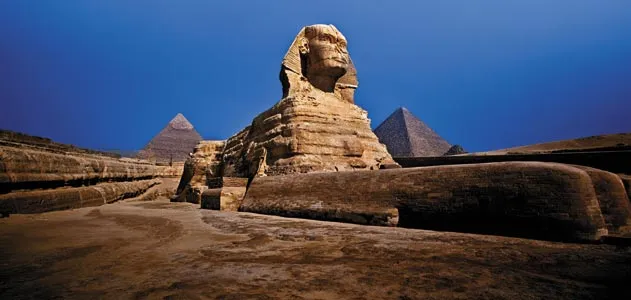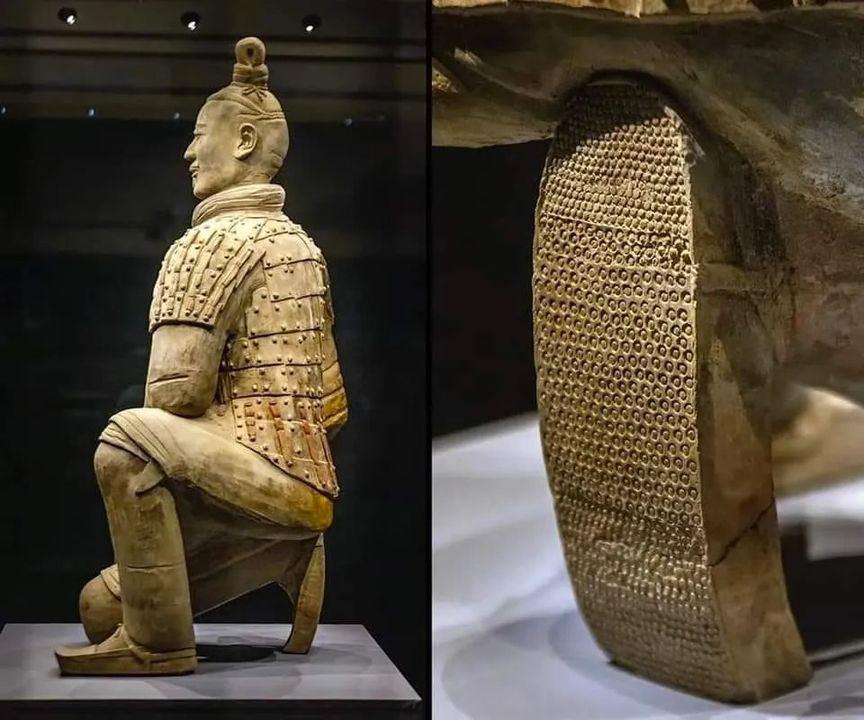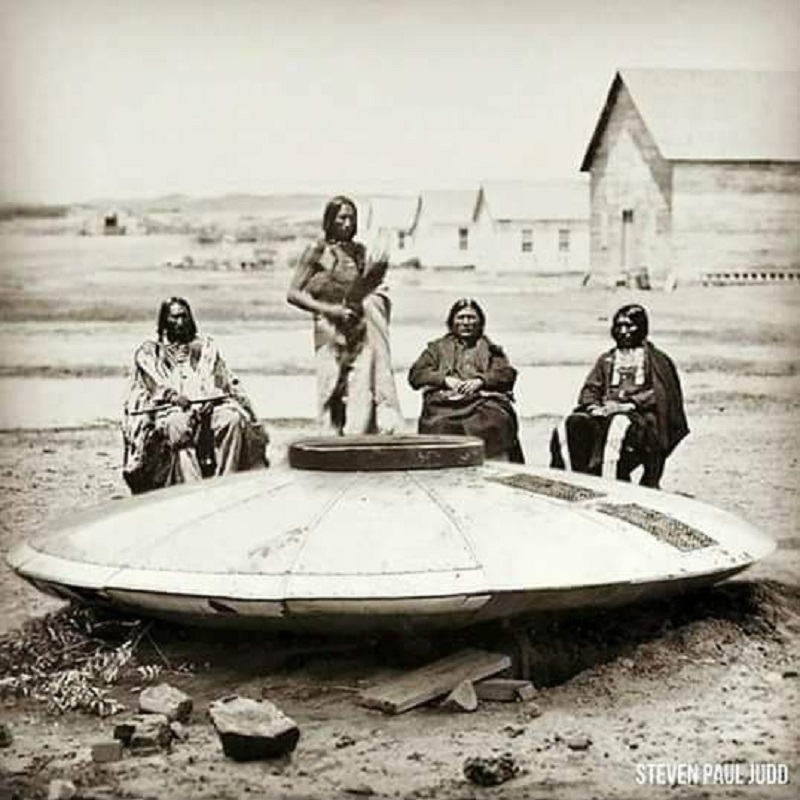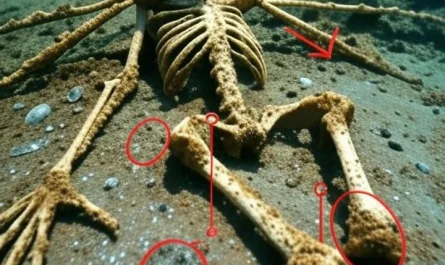French scholar Jean-François Champollion announced his decipherment of Egyptian hieroglyphs on September 27, 1822
The key to this centuries-old dilemma was an unassuming slab of granodiorite unearthed in Egypt in July 1799. Dubbed the Rosetta Stone after the town where it was found, the stela fragment features versions of the same decree in three scripts: hieroglyphs, Demotic (essentially a shorthand form of hieroglyphs) and ancient Greek.
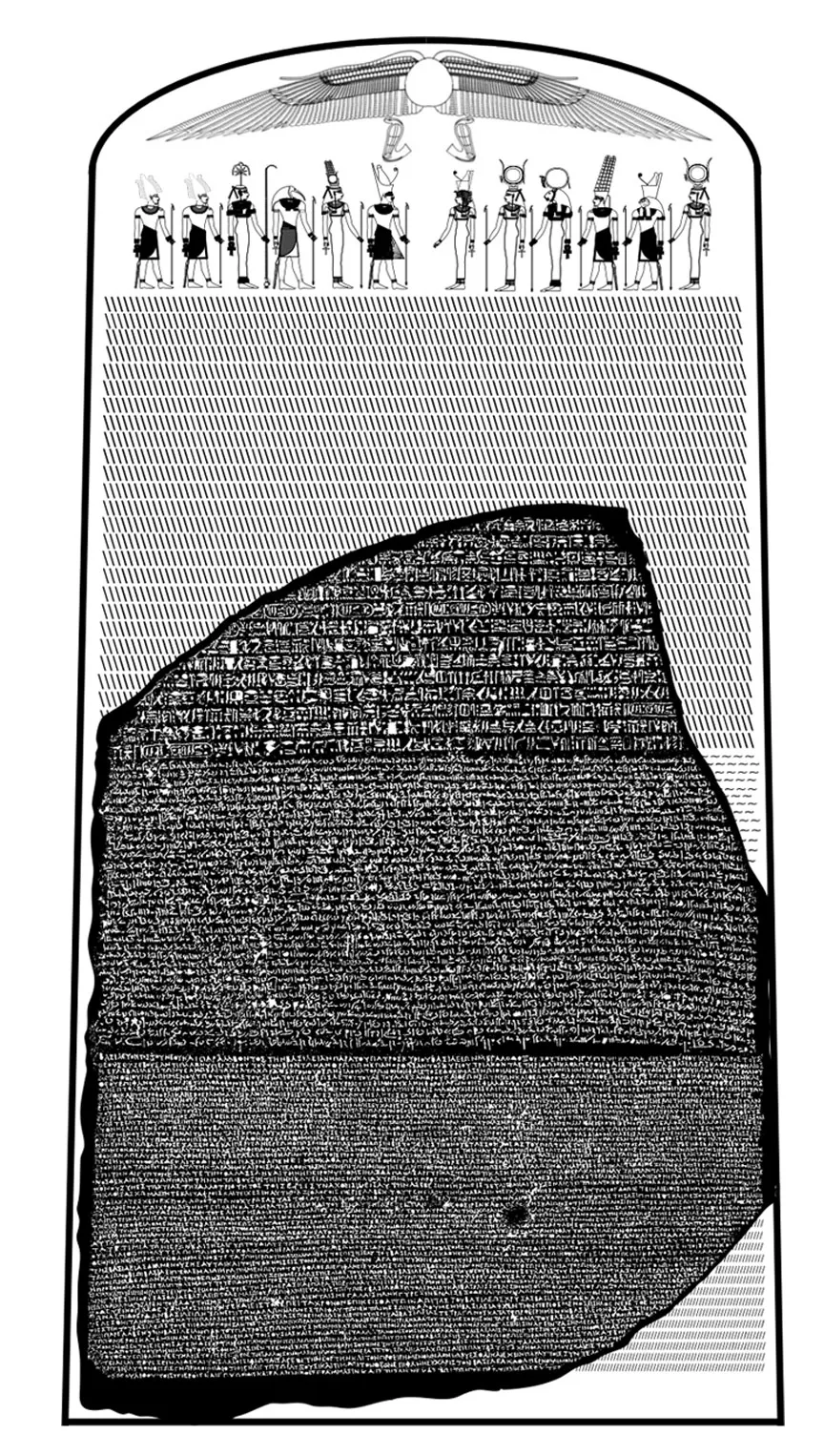
In theory, the juxtaposed inscriptions should’ve been easy to decipher, as scholars at the time knew ancient Greek and could therefore piece together the hieroglyphic translation based on the Greek message. “The first people to look at the Rosetta Stone thought it would take two weeks to decipher,” says Dolnick, author of The Writing of the Gods: The Race to Decode the Rosetta Stone. “It ended up taking 20 years.”
What is the Rosetta Stone?
The Rosetta Stone is a fragment of a larger slab erected at an Egyptian temple in 196 B.C.E., during the reign of Ptolemy V, a Ptolemaic king of Macedonian Greek ancestry. Its surface is inscribed with a decree issued by a council of Egyptian priests on the anniversary of Ptolemy’s coronation.
Despite the stone’s later significance, the text itself is relatively mundane, listing the king’s accomplishments before reminding readers of his divinity and affirming his royal cult. (Read the full decree here.) The priests conclude their message by ordering that the decree be inscribed on stelae “in the writing of the words of the gods, and the writing of the books and in the writing of [the Greeks].” These copies, in turn, were distributed at temples across the kingdom.

Developed around three millennia earlier, in 3100 B.C.E., hieroglyphs (the noun form of the word, as opposed to the adjective “hieroglyphic”) are pictorial symbols used to write the ancient Egyptian language. By Ptolemy’s time, some 3,000 years after hieroglyphs’ creation, the elaborate script was mainly used by priests (hence the Rosetta Stone’s reference to “the words of the gods”), with the general public more often using the simpler Demotic. (For a sense of just how long ancient Egypt thrived, writes Dolnick, consider this: “Cleopatra came at the very end of Egypt’s imperial run, 13 centuries after King Tut, 20 centuries after the golden age of Egyptian literature, 26 centuries after the Great Pyramid.” To put it in another context, the reign of Cleopatra is closer to the year 2022 than it is to when the pyramids were built.)
Possible reconstruction of the original stone slab A. Parrot via Wikimedia Commons under CC BY-SA 4.0
As Ilona Regulski, a curator of Egyptian written culture at the British Museum, which has housed the Rosetta Stone since 1802, says, “Egypt was a very multicultural society at the time, … and those who could read and write were able to do so in more than one language. So it was quite common in that time to translate any kind of formal writing into other scripts, whether it was Egyptian to Greek or Greek to Egyptian.”
The council issued its decree in the midst of the Great Revolt (206 to 186 B.C.E.), a poorly documented uprising sparked by long-brewing tensions between the Greek Ptolemaic rulers and their Egyptian subjects. Egyptian veterans of a war spearheaded by Ptolemy V’s father “returned home unwilling to accept their role as second-class citizens and actively pushed for the return of Egyptian leadership,” per Archaeology magazine. The Rosetta Stone references these events directly, detailing how Ptolemy, who succeeded his father around 204 B.C.E., captured an enemy town, “cut to pieces the rebels who were therein, and … made an exceedingly great slaughter among them.” Ebullient in its praise of the young king, the decree is essentially “a propaganda poster carved in stone,” says Dolnick.
How was the Rosetta Stone discovered?
At some point after its creation in 196 B.C.E., the Rosetta Stone was broken into pieces, leaving its inscriptions incomplete. Originally part of a taller slab, the surviving fragment contains 14 lines in hieroglyphic script, 32 in Demotic and 53 in ancient Greek. The top and bottom right sections of the stone remain unaccounted for despite archaeologists’ efforts to locate them.
Around 1470, builders constructing a fort a few miles northwest of the port town of Rashid, or Rosetta, incorporated the fragment into a wall. It remained there until July 1799, when a member of a French team tasked with rebuilding the now-dilapidated fort identified the stone as an object of significance. (Pierre-François Bouchard, the French officer in charge of the unit, is often credited with the discovery, but as Dolnick notes in The Writing of the Gods, it’s more likely that an unknown Egyptian laborer spotted the slab.)
The French had arrived in Egypt a year earlier, with Napoleon Bonaparte landing his fleet of 400 ships and 54,000 men outside Alexandria on July 1, 1798. Fresh off of a successful Italian campaign, Napoleon hoped to assert French trade interests in the Middle East, challenge Britain’s dominance in the region and gather information on Egypt’s rich history. As the then-general told his troops at the beginning of the Battle of the Pyramids, “Soldiers, from the height of these pyramids, 40 centuries look down upon you.”
Louis-François, Baron Lejeune, The Battle of the Pyramids, 1808
Louis-François, Baron Lejeune, The Battle of the Pyramids, 1808 Public domain via Wikimedia Commons
Napoleon initially enjoyed great success against the Mamluk and Ottoman armies then in control of the region. (The Mamluks seized power in Egypt in 1250 C.E. and remained highly influential even after their defeat by the Ottoman Empire in 1517.) But British troops led by Admiral Horatio Nelson soon curbed his ambitions, destroying or capturing the majority of France’s ships. Napoleon fled home to France in August 1799, leaving his men—including the 160 or so scholars tasked with documenting Egyptian culture—stranded abroad.
When the French finally surrendered to the English in 1801, they agreed to relinquish the ancient treasures they’d found, among them the Rosetta Stone. This “very curious stone,” in the words of a London newspaper, arrived in England in February 1802 and went on view at the British Museum later that year. Today, two painted inscriptions on the slab’s sides testify to its colonial history: on the left, “Captured in Egypt by the British Army 1801,” and on the right, “Presented by King George III.”
Why was the Rosetta Stone so difficult to decipher?
The scholars who set out to decipher the Rosetta Stone faced an array of challenges. Chief among them was the fact that hieroglyphs had fallen out of use some 1,400 years prior, with the last known hieroglyphic inscription etched into a gateway around 400 C.E. The last known inscription in Demotic, the shorthand script that evolved from hieroglyphs, dates to just a few decades later, in 452 C.E. Over the intervening centuries, says Regulski, “the connection between hieroglyphs and the spoken language [of ancient Egyptian] was lost.” Ancient Egyptian itself became largely obsolete after the seventh century C.E., when Arabic started gaining traction in the region.
Contrary to popular misconception, the Rosetta Stone isn’t a trilingual text. It’s a bilingual one with three separate scripts. Think of the hieroglyphs as a complicated form of calligraphy and the Demotic text as ordinary letters. Both are written in ancient Egyptian, but they look so different that observers initially thought they represented different languages. Instead, “the hieroglyphs … are a way of writing the Egyptian language in the same way that ‘ABC’ is a way of writing English, French or German,” Dolnick explains.
As Dolnick notes, scholars soon realized the Rosetta Stone’s three scripts “said only roughly the same thing, as if three people had each described the same movie. So you couldn’t simply assume that the first word in one inscription corresponded to the first word in the next inscription.” (Some of these differences stemmed from the fact that the decree was “probably issued in Greek, then translated into Egyptian to give [it] a local veneer … by adding things [that] made it feel a bit more Egyptian,” according to Regulski.)
Even if one could figure out a way to read the hieroglyphs, they’d likely have trouble piecing together the meaning of the sounds they found themselves uttering. “It would be as if English were a dead language thousands of years from now,” says Dolnick, “and someone found a text and they figured out how to sound out the alphabet, and they read aloud ‘c-a-t.’ But how would they know that those sounds meant a cute little animal with fur and whiskers?”
How was the Rosetta Stone deciphered?
Despite the obstacles faced by would-be decipherers, a host of scholars rushed to try their luck at cracking the Rosetta Stone’s code. Two emerged as clear frontrunners: Champollion, the French philologist who ultimately proved successful, and Thomas Young, an English physician and physicist who’d made major contributions to scientists’ understanding of light.
According to Dolnick, Young “wasn’t especially interested in Egypt or hieroglyphs.” But the Rosetta Stone posed a puzzle that he, as a polymath and “the greatest decoder of the era,” couldn’t resist. The decipherment, adds Regulski, was “very much … a kind of entertainment in his leisure hours, [an] experiment he wanted to do for the sake of deciphering.”
In contrast, Champollion was “obsessed” with both deciphering hieroglyphs and unlocking the secrets of ancient Egypt. For him, the project “was very much a gateway into an ancient culture that he wanted to understand,” says Regulski. “He didn’t only want to read the texts. He wanted to understand the culture behind the writing.”
Heightening tensions between Champollion and Young was the fact that France and England were then “great rivals,” says Dolnick. “So not only are they two individuals in a race for their own glory, but they’re [also] in a race for national glory.”
The quest to decipher the Rosetta Stone was complicated by the unique nature of the ancient Egyptian language. At the time, Champollion, Young and their peers had mainly worked with alphabetic languages like English and French, in which individual letters and groups of letters represent different sounds. Hieroglyphic script, however, is a hybrid system, with its hundreds of characters alternatively representing sounds, objects or ideas. As the New Yorker explains, “A hieroglyph might be phonetic (sounding out a word), or it might be pictographic (giving you a picture of the thing being indicated, as in ‘I ♥ New York’), or it might be ideographic (giving you an agreed-upon symbol, such as ‘XOXO’ or ‘&,’ for the thing indicated).”
Before Young made the first breakthrough in the decipherment process, most scholars believed hieroglyphs were entirely ideographic. “Hieroglyphs were so mysterious looking, so ornate and so beautiful,” says Dolnick, “that everyone … assumed they had some deep mystical meaning. This wasn’t just an elaborate way of writing. It wasn’t a mysterious alphabet, they believed. This was a way of writing the Egyptian equivalent of ‘E = mc^2.’ It wasn’t a way of writing ‘Don’t forget to pick up milk on your way home.’”
Young’s eureka moment arrived when he decided to focus on sets of hieroglyphs enclosed in oval frames (known as cartouches). Realizing that non-Egyptian names like the Greek “Ptolemy” would be difficult to write in an ideographic script, he proposed that hieroglyphs could, in rare circumstances, be phonetic, as names are pronounced roughly the same no matter the language. Per The Writing of the Gods, Young drew inspiration for this argument from Chinese:
How would you write a foreign name in Chinese? Take Napoleon. There’s no problem in translating ordinary words into Chinese and then writing them down—the Chinese language has words for house and duck and basket, so you can easily write them. But Chinese had no word for Napoleon. Why would it? The Chinese solution, Young learned, was simple enough. To write a foreign name in Chinese, you picked characters that had the appropriate sounds, and you ignored their meaning.
Based on the translated Greek section of the Rosetta Stone, Young knew the name Ptolemy appeared repeatedly throughout the hieroglyphic text. Looking at the hieroglyphs, he identified three identical cartouches and three cartouches that began the same way but had several hieroglyphs added on at the end. Through trial and error, Young concluded that the identical cartouches spelled out Ptolemy, with individual hieroglyphs representing the sounds of the name. The longer cartouches, he argued, added a title of some kind—perhaps “Ptolemy the Great.”
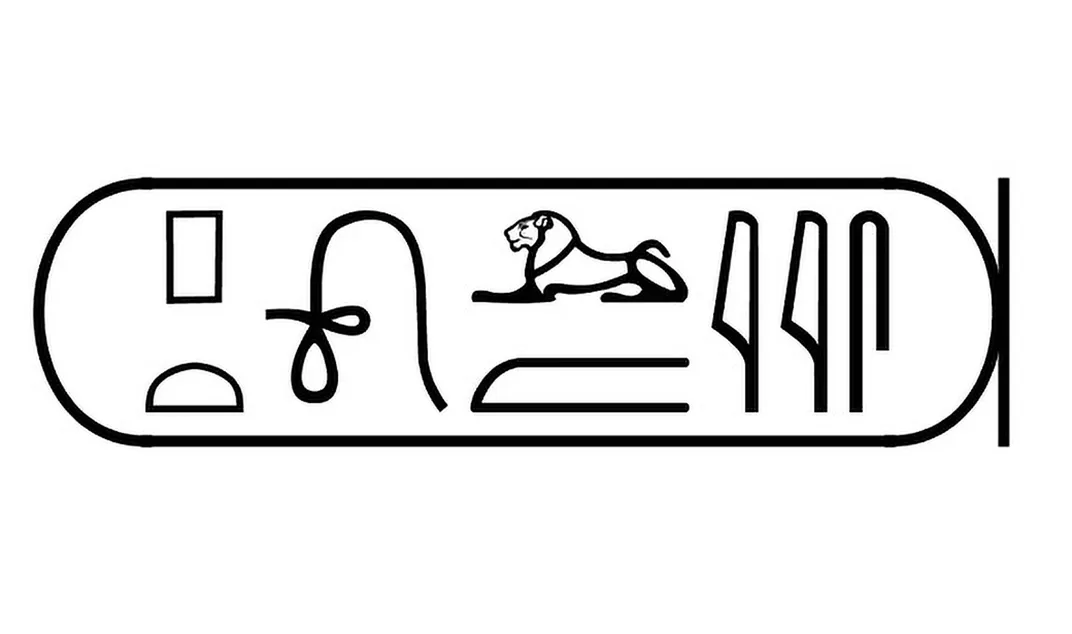
Cartouche of Ptolemy V A. Parrot via Wikimedia Commons under public domain
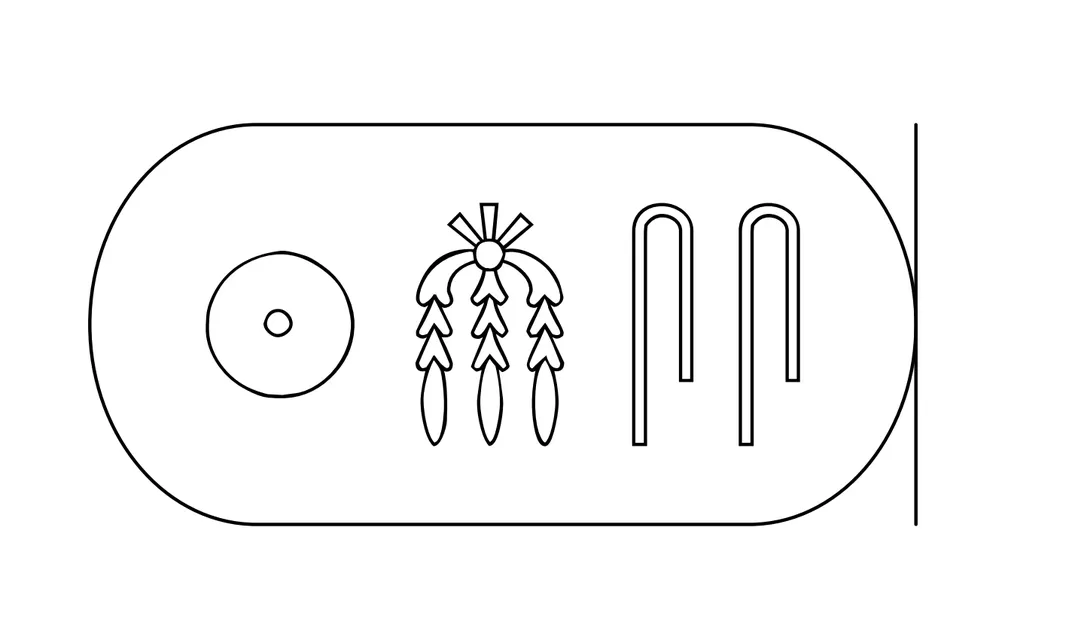
Cartouche of Ramses II, or Ramesses II Edward Dolnick
Young published his findings in Encyclopedia Britannica in 1819. But his decipherment faltered from there, in large part due to his refusal to believe that hieroglyphs could represent sounds when not used to write out foreign names. Champollion took the lead, drawing on his expansive knowledge of Coptic—a language derived from ancient Egyptian—to finally break the Rosetta Stone’s code.
“The gamble that Champollion makes is that although Egyptian was a dead language, it had given rise to another language called Coptic, which was itself dead but still around,” mainly through the Coptic Christian Church, says Dolnick. While hieroglyphs and Demotic—two earlier iterations of the ancient Egyptian language—were written in unique scripts, Coptic used the Greek alphabet, meaning it remained readable in the 19th century.
Because Champollion “knew Coptic, …. he could figure out the sound value of hieroglyphs from the correspondence between the Egyptian hieroglyphs and the Greek translation on the Rosetta Stone,” James Allen, an Egyptologist at Brown University, told Live Science last year. Combining his Coptic skills and Young’s decipherment method, Champollion managed to translate additional cartouches and determine the phonetic values of a dozen hieroglyphs.
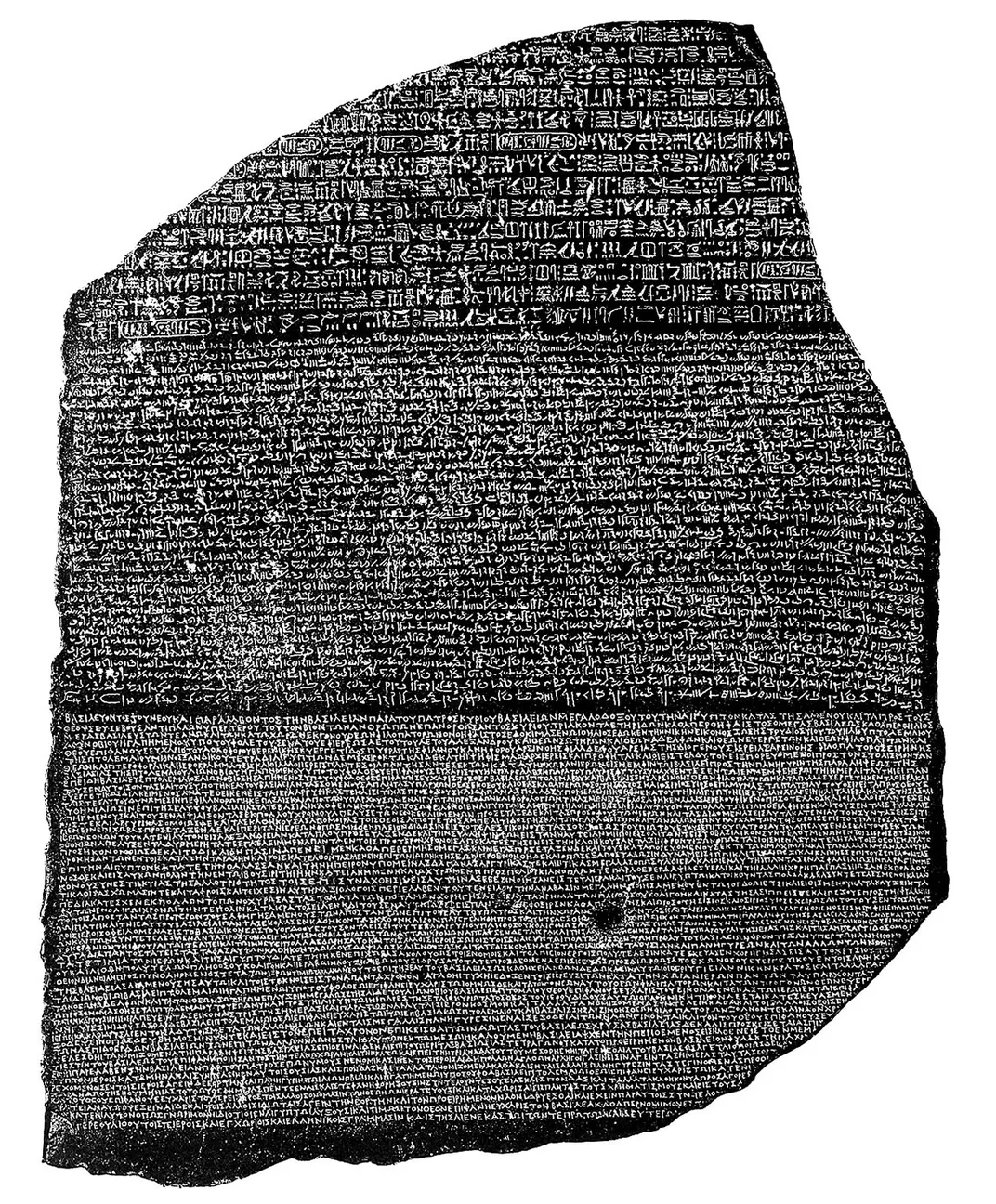
The Rosetta Stone’s inscriptions are incomplete, as sections of the original stone slab are missing. Public domain via Wikimedia Commons
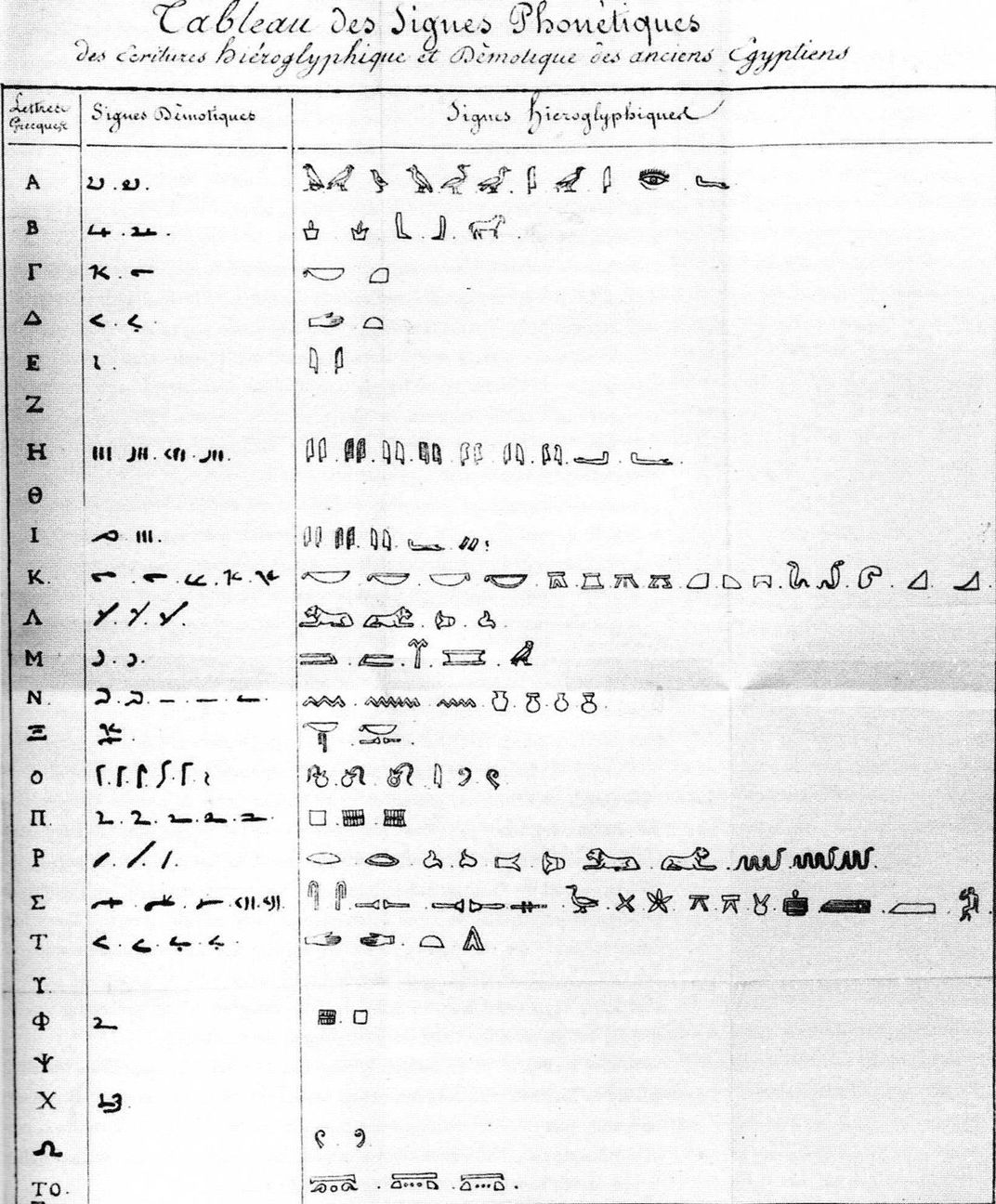
Champollion’s table of hieroglyphic phonetic characters, with their Demotic and Coptic equivalents Public domain via Wikimedia Commons
In 1822, Champollion studied a cartouche copied from Abu Simbel, a religious site established by the pharaoh Ramses II, or Ramesses. Unlike Ptolemy, Cleopatra and other non-Egyptian names deciphered to date, the name Ramses was Egyptian—a fact that Young believed precluded his cartouche from containing phonetic hieroglyphs. The Abu Simbel cartouche contained four symbols, one of which was repeated at the end. Champollion identified the repeated hieroglyph as the sound “s” and theorized that the first hieroglyph, a circle with a dot in the middle, represented the sun (ra or re in Coptic).
“This gave him the sequence (‘ra-?-s-s’),” wrote author Simon Singh for the BBC in 2011. “Only one pharaonic name seemed to fit. Allowing for the omission of vowels and the unknown letter, surely this was [Ramesses]. The spell was broken. Hieroglyphs were phonetic, and the underlying language was Egyptian.”
What is the Rosetta Stone’s legacy?
Two hundred years after Champollion announced his successful decipherment of hieroglyphs, the artifact responsible for his breakthrough—the Rosetta Stone—occupies a singular place in the cultural consciousness.
It’s one of the most popular attractions at the British Museum, where it will soon serve as the centerpiece of an exhibition on hieroglyphs. Across the English Channel in France, events ranging from an exhibition of Champollion’s unpublished documents to a mobile “Egyptobus” museum are slated to mark the anniversary of the hometown hero’s breakthrough. In Egypt, the bicentenary is both prompting celebrations and sparking calls for Britain to return the stone.
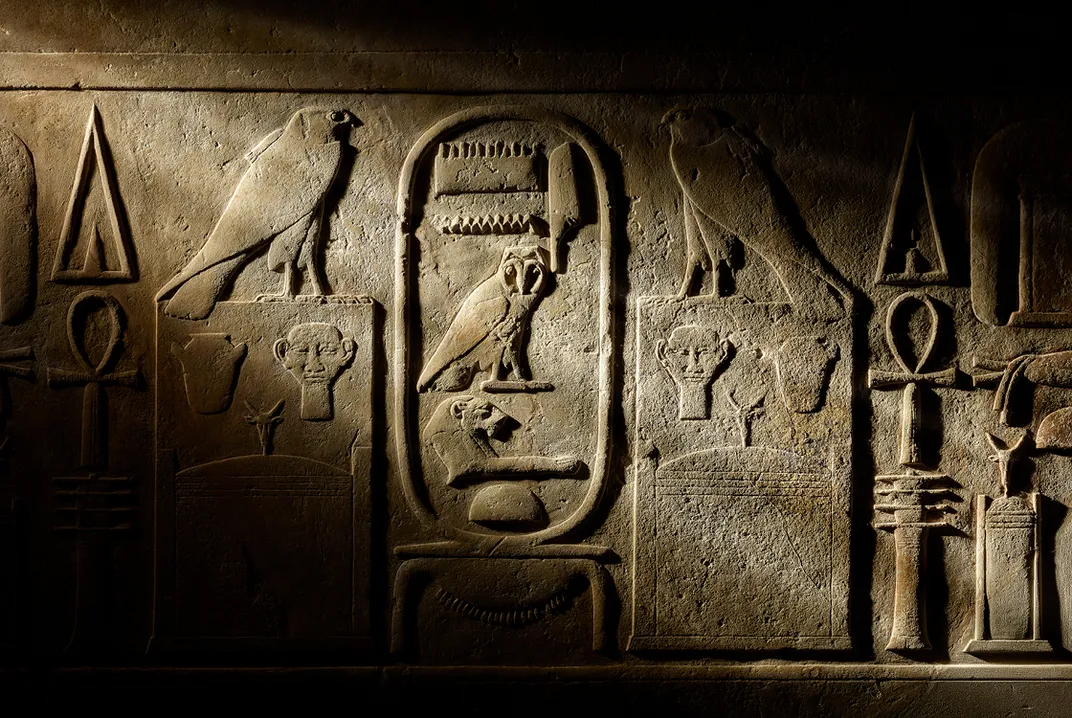
Temple lintel of Amenemhat III, Hawara, Egypt, 12th Dynasty, 1855–1808 B.C.E. © The Trustees of the British Museum
While the stone on view in London is the most famous version of the 196 B.C.E. decree, it’s far from the only one. “It’s written in the text that the decree should be inscribed on [stone] and set up in … all the temples of Egypt,” says Regulski. “So if we believe that every temple should have a copy of this decree, the Rosetta Stone is [just] one of those copies.” To date, the curator adds, archaeologists have discovered more than two dozen such fragmentary inscriptions.
Reflecting on the stone’s significance in a 2007 interview with Smithsonian magazine, John Ray, author of The Rosetta Stone and the Rebirth of Ancient Egypt, said, “[T]he Rosetta Stone is really the key, not simply to ancient Egypt; it’s the key to decipherment itself.”
He concluded, “You’ve got to think back to before it was discovered. All we knew about the ancient world was Greece, Rome and the Bible. We knew there were big civilizations, like Egypt, but they’d fallen silent. With the cracking of the Rosetta Stone, they could speak with their own voice, and suddenly whole areas of history were revealed.”
